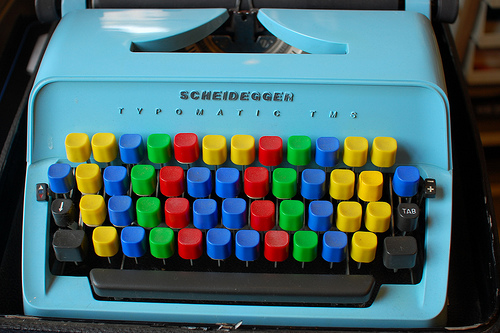
Writing content for your website isn’t like writing an essay for school. There’s a certain style that you need to adopt if you want to capture your users attention and keep them on your website.
Finding Content
If you’re writing for the web it’s a good idea to always be on the lookout for content. Keep a notebook handy and jot down ideas. If you’re at an event take pictures and jot down your thoughts. Find people relevant to your area of work, interview them and ask lot’s of questions that your users will find interesting.
It’s easier to write for the web when you have access to lots of fresh, interesting content.
Plan Your Content
Keyword research is essential. Find out what terms your customers are searching for and give them the content they need.
Be strategic in your keyword analysis – it must match your business goals.
Write content with your customers in mind. Provide useful, expert information.
Your writing needs to establish you as a trusted advisor.
Google webmaster guidelines state: “Create a useful, information rich site and write pages that clearly and accurately describe your content”
Types of Post
To keep your content fresh try experimenting with different types of article.
You could try writing:
- A news article 500 – 700 words
- An instructional “how to piece”
- Informational posts – like wikipedia
- A review – it could be of a product, building or event you attended
- An interview – this is a great way to get another expert contributing to your blog
- A problem solving piece
- An Inspirational piece about a project you’ve been involved with
- A video post – around 2 mins is optimum time for a video
Try and keep your content varied. Never duplicate your content – Google will find out and penalise you.
Make A Good First Impression
Pay close attention to your first few sentences. Your first 3 or 4 lines should grab your readers attention.Your reader should get an understanding of your article straightaway – it should pique their curiosity.
People tend to scan articles on the web – put your important points near the top of the article.
Think of your article as an inverted pyramid – put the conclusion first then spend the rest of the article describing how you reached the conclusion.
Use Great Images
Images grab your readers attention and lure them into reading more. Try and be original when choosing your images – make sure they’re relevant to your article.
Use your own images wherever possible or check out Flickr creative commons. Instagram is an interesting way of getting some great, original pictures.
Add a caption to your image to make it more meaningful. Images captions are one of the most read areas on a website.
If you have a long article consider using more than one image. Images break up the text and add colour to the page.
Use Lots of Headings
Most people will scan a piece before reading it properly. If you have meaningful headings within your article it will encourage your user to read on.
Headings also help to break up your article into bite size, easy to manage chunks.
Plan your headings before you write your piece – it will help you to organise your thoughts and help the flow of the article.
Use Keywords In Your Title
The title of your articles should be relevant and meaningful. People tend to scan articles – if your title isn’t relevant to them they’ll quickly move on.
Title Tags & Meta Descriptions
Take care when crafting your title tags and meta descriptions. An accurate and descriptive title helps people to choose your site over your competitor’s. A descriptive title tag that contains relevant keywords is also important for maximising your ranking in search engine results pages.
The meta description must accurately describe what people will find when they go to that page. If you have a good meta description users are more likely to click through to your page.
Writing Style
Paragraphs should be frequent and punchy. Get your point across in a straightforward, no frills way.
Keep your sentences short and to the point. The language you use should be concise and unambiguous. Limit sentences to one idea per sentence.Try not to cover too many points in one article.
Headings, bullet points and lists will help draw a reader through your post. Using borders, block quotes, italics and bold headings will help to emphasise your ideas.
Don’t be afraid to use space in your writing – you don’t want your reader to feel overwhelmed by too much text.
Finally
Feedback is always useful – ask a friend or colleague to review your finished work. Did they understand the points you were trying to make? How long did it take them to read it? Were they entertained or informed by your work?
Always put a call to action at the end of your work – share this with your friends, please leave a comment, sign up for our newsletter.